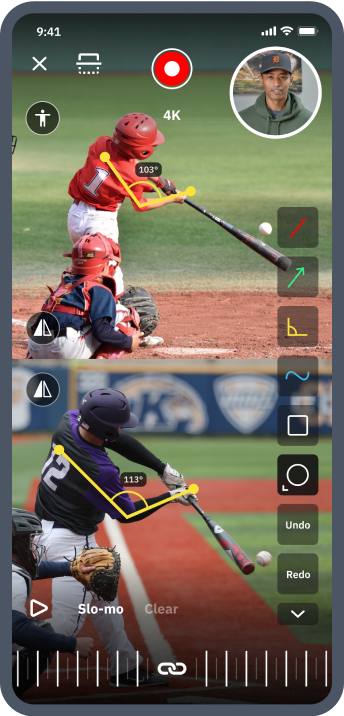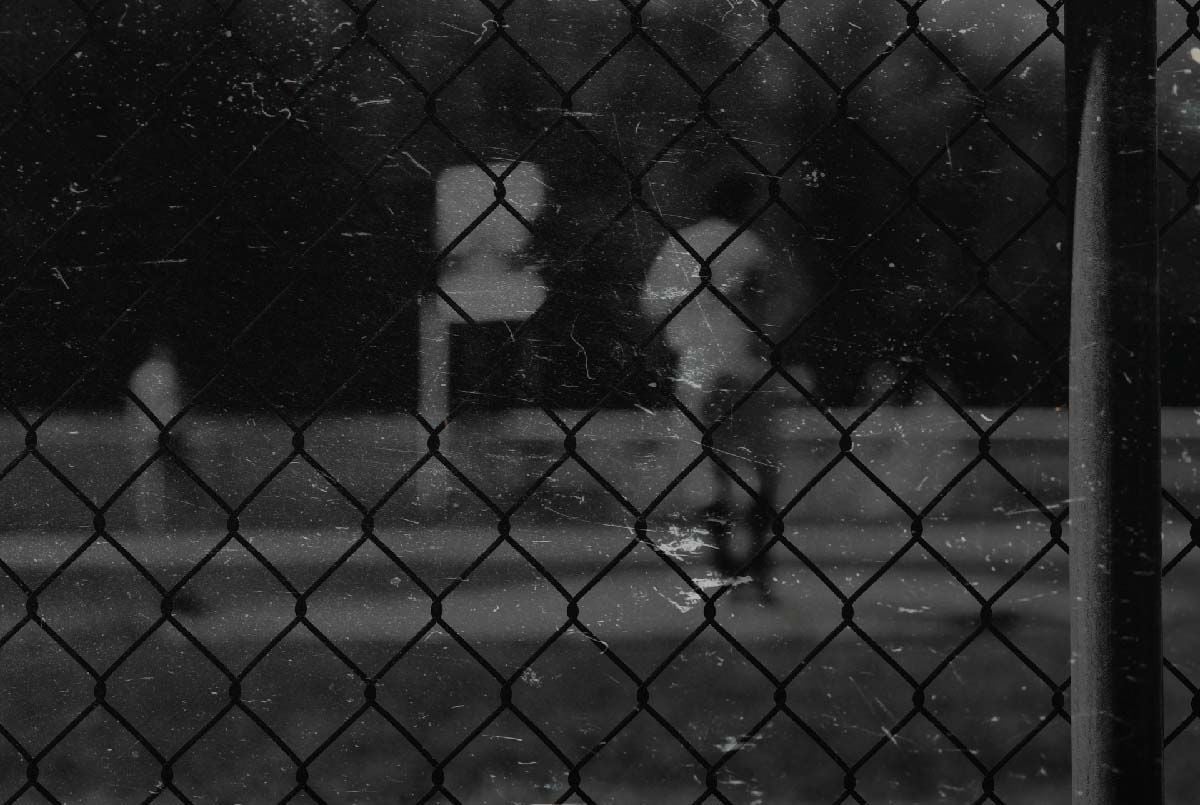The Real Science Behind Video Analysis for Baseball & Softball Players | Your Questions Answered

What is video feedback analysis and why does it matter for baseball and softball players?
As a tool for skills training that’s developed over the last 50 years, video feedback can benefit baseball and softball athletes who are learning new skills for the very first time as well as experienced athletes seeking to hone their performance and optimize their training routines.
In this science-packed guide to all things video analysis in our games, you’ll learn:
- The history of video analysis software
- How & why video analysis works?
- The success of video feedback analysis
- How to accelerate skill learning in sports
- Baseball & softball swing analysis
- How to use video analysis for remote baseball & softball coaching
The History of Video Feedback and Analysis Software
The history of video analysis starts with the invention of the video recorder by Charlie Ginsburg in 1951.
Since day one, video analysis and feedback were actually employed in education and professional development settings.
In fact, in 1963, an entire program about microteaching was launched at Stanford University, which heavily incorporated the video recorder.
Many early iterations of the video analysis were centered around filming course participants as they interacted with potential business clients.
The participants then watched their recorded interactions with sales trainers to discuss how they did and where they could improve.
Throughout the 1980s, 1990s, and today, video feedback has supported teacher-to-student relationships of all kinds.
The biggest power users have traditionally been professionals who must rely on interpersonal communication skills, such as educators, psychologists, social workers, doctors, and nurses.
But feedback is crucial to all learning forms, so it wasn’t long before video feedback analysis moved beyond these original applications and expanded to other areas, like sports.
Video feedback has been used in sports skill acquisition studies since the 1980s.

The History of Video Analysis in Sports
Sports science researchers saw the scientific efficacy of behavioral procedures in improving professional skills, so they sought to apply the same principles to athletics.
A pivotal example of video feedback combined with expert video modeling – which is a fancy way of saying that a pro demonstrates the movement – was R. Rikli and G. Smith’s 1980 study on tennis players.
They administered video feedback at various stages throughout the process of improving the tennis serve and found that groups that received video feedback had statistically better results than those without.
This seminal study helped pave the way for the use of video feedback in other sports.
One of many more recent examples of video feedback in sports was the 2012 study by Ruhil Razali, Edin Suwarganda and Izwan Zawaki from the Centre for Biomechanics at The National Sports Institute.
Their research aimed to examine if junior tennis players could improve their speed and accuracy of the serve by using direct video feedback alone – spoilers, they can.
And, an even more recent example out of many comes from the Netherlands in 2019 by Marjan Kok et al.
These researchers wanted to see how video analysis and self feedback between students in a PE class learning how to shot-put would fare against an in-person instructor-guided group.
Their results showed that shot-put distance and technique increased significantly after practice, without differences between the groups.
So they concluded that:
Self-controlled video feedback without guidance of a teacher on movement technique led to similar learning effects as traditional guidance of the teacher in a PE context.
There’s plenty more examples that we’ll explore in detail below, but the bottom of this guide has some additional recent research worth checking out around the topic – if you’re interested.
The success of video feedback in sports and other domains has led more coaches and trainers to adopt the technology than ever today.
But before diving further into the applications of video analysis in baseball and softball specifically, let’s look even deeper at the science behind it.

Unlock your ballplayer’s full potential
Find the perfect vetted coach to build a solid foundation or take your player's skills to new heights.
Download the free app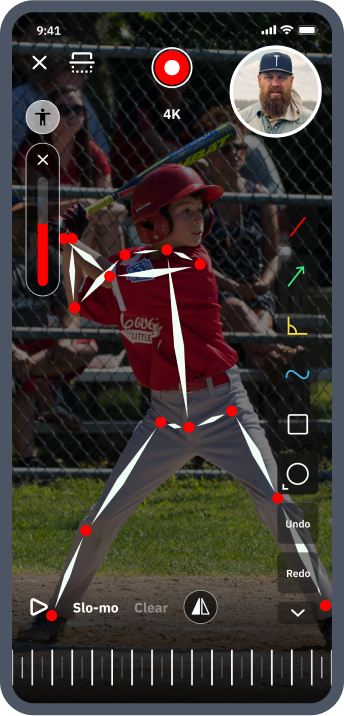
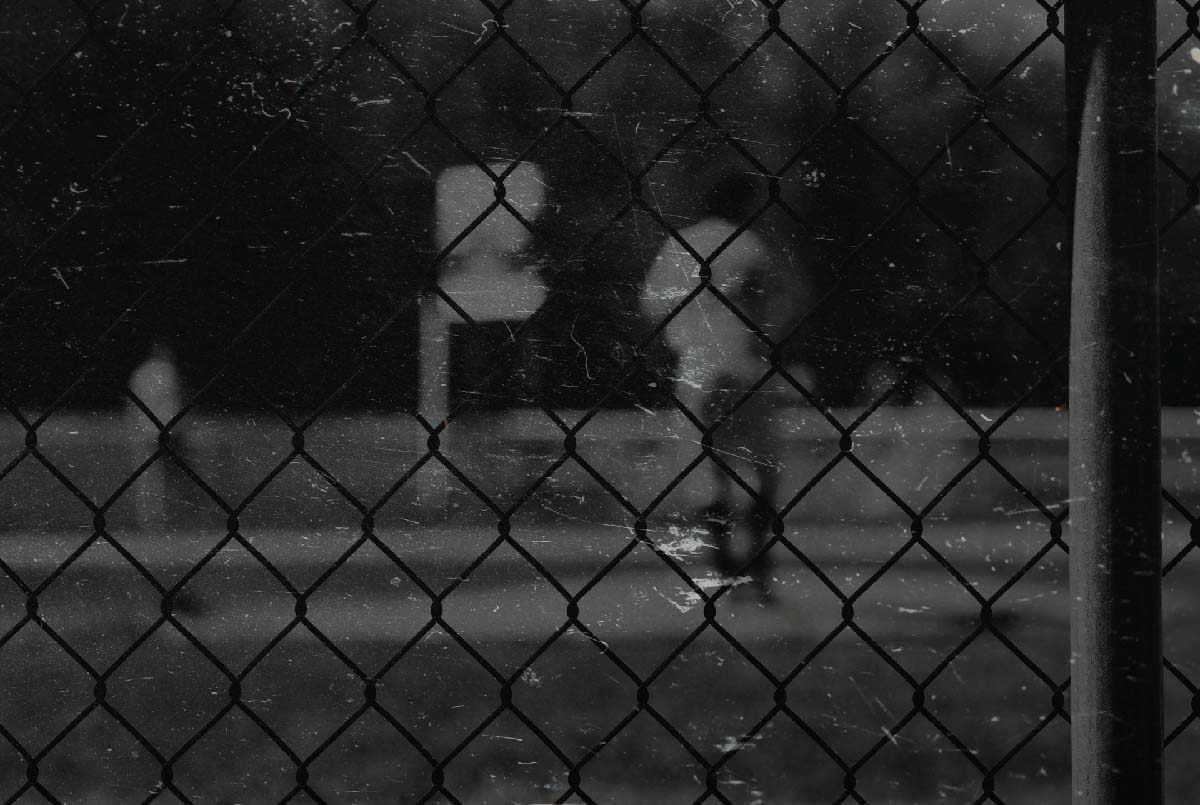
How Does Video Analysis Work?
We all know that students need input from instructors to learn and improve, but video analysis allows that feedback to go a step further.
With video analysis, learners can watch themselves performing a skill “at a distance,” giving them an instructor’s perspective on their behavior.
It’s much easier to learn and internalize any necessary adjustments by watching yourself from this distanced and more objective perspective.
Video also removes some of the bias or misconceptions coaches and instructors might have when watching their learners.
It allows coaches to pause, slow down, and re-evaluate their real-time and human-error-prone perceptions of a given athlete’s movement pattern to arrive at more complete and objective opinions and feedback.
But there’s another commonly missed benefit to video analysis and feedback that we explored in our Ultimate Guide to Feel vs. Real in Baseball and Softball.
As anyone who has ever been in a coaching role can attest, giving tough-to-swallow feedback to certain ballplayers can be challenging – particularly those who are self-critical by nature.
Adding your two cents, expert as it may be, to their already negative self-talk is going to halt their effective learning for the day.
This is especially true when the recipient is already feeling frustrated or disappointed – like after a chronically unsuccessful round of BP or a rough in-game at-bat.
In such cases, it can be difficult to deliver the necessary adjustments without the student feeling attacked.
One way to overcome this difficulty is to view video tape together and discuss what went wrong with a collaborative spirit.
Using video analysis in this way allows both parties to have a shared understanding of the situation and removes the emotional charge from such feedback.
Lastly, depending on how video feedback analysis is structured and administered to students, it can also take advantage of some powerful psychological phenomena that work alongside it to accelerate long-term learning outcomes for baseball and softball players.
We’ve explored a few of these in serious depth.
Check out our writings on the spacing effect, delayed learning, and Zeigarnik effect.
But, as alluded to, video analysis comes in many varieties.

Variations of Video Feedback
In the 50 years since it was first developed, all sorts of different video feedback types have proliferated.
During the earliest days of video feedback, the “unstructured replay” approach was common.
This method involved individuals confronting themselves through video, without much other instruction. The learning was supposed to come from watching and picking up on self faults in the video.
The unstructured method eventually gave way to the “positive self-modeling” approach.
Wherein individuals would only see videos of their successful interactions – like a montage of homeruns – meant to reinforce positive behavior and give them a positive self-image.
Education scholars have pointed out how positive empowerment is a great way to learn and positive self-modeling in video feedback does produce strong results.
However, the most recent versions of video feedback analysis often incorporate additional instruction materials.
Some supplemental features could include:
- Modeling, viewing the desired movement, as demonstrated by experts
- Role-playing the target skills with other online participants, or in real-world situations, under remote supervision
- “cueing” or “behavior coding,” which is targeted feedback given by the instructor during a viewing of the video and sent to the student
Models that link instruction, practice, and feedback have proven to be most effective of all, showing learners what the target behavior looks like in practice and evaluating their performance in a structured manner.

Microbehaviors
One sub-section of video feedback analysis research focuses on microbehaviors.
Microbehaviors are, according to the scientists who study them extensively, Ruben Georges Fukkink, Noortje Trienekens, and Lisa J. C. Kramer, “concrete behaviors with a relatively brief duration, which are usually studied with behavioral counts (e.g., head nodding, hand gestures, the number of open questions that trainees ask or how often they look at the other person).”
Some studies with video feedback focus on these features since they aren’t easily picked up by the person performing the skill or by naked-eye teacher observers.
A slightly expanded version of microbehavior analysis is the most common type used in baseball or softball to break down parts of a batter’s swing, a pitcher’s delivery, or a middle infielder’s footwork.
Wanna grow your baseball or softball coaching brand?
Get connected to new local and online lesson clients—along with all the tools you need to scale.
Download the free app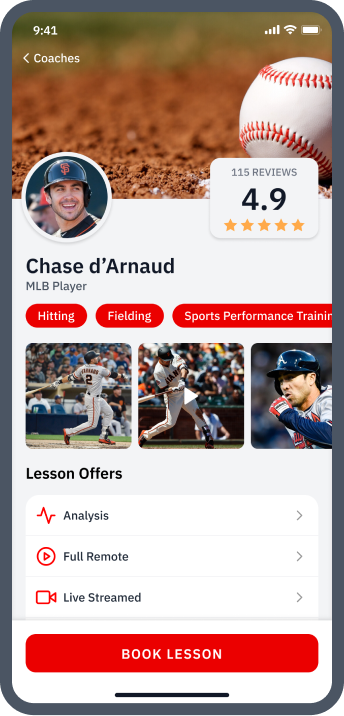

Holistic Skills
Some efforts with video analysis have focused instead on broader skills, like assessing a person’s warmth or kindness.
Although harder to measure than microbehaviors, these holistic skills can be assessed on a rating scale.
Often, holistic skills like these are observed and measured in communications training. They test individuals on receptive skills, informative skills, and relational skills.
For remote baseball or softball coaches who are truly invested in their client’s long term success, this holistic approach may mean using processes or assessments to codify and rating-scale-measure things like a player’s coachability or, at the very least, a student’s overall body awareness.

The Success of Video Feedback Analysis
In their study of the success of video feedback in professional settings, Fukkink, Trienekens, and Kramer point out that the method had mixed results in its earliest days.
But after a more comprehensive review of more modern studies done with video feedback, these researchers were able to pinpoint what makes it most successful:
- Individuals can effectively improve their key interaction skills by watching themselves on video. Non-verbal communication skills, however, are much harder to measure. Luckily, this is much less important in sports than in something like enterprise sales training.
- Structured observation leads to better results than unstructured. People who heard or briefly watched an example of the target behavior before starting their video feedback session were able to concentrate more on the specific skill they needed to learn.
- Video feedback analysis works especially well for developing new behaviors, rather than eliminating undesired behaviors. This could be a result of the positive self-modeling aspect to video feedback that was mentioned earlier.
For coaches and instructors wishing to use video feedback analysis, it’s important to keep all of this in mind.
Your athletes or students might benefit even more from seeing the right way to do something – either by watching themselves perform it successfully, by being given pro player clips to use as examples of the correct movements, or by watching you, the expert, demonstrate them – than by ever seeing the wrong way to do it.

Video Analyzing and Feedback Success in Sports
Video feedback has specifically been shown to enhance motor learning.
In recent years, progress in video technology capabilities has led physical educators and research teams to try video feedback analysis for movement-related exercises – like a baseball or softball swing.
This variation of video feedback, aside from being the one we are most concerned with, is distinct because learners actually have a more difficult time assessing their target behavior without the help of an external aid.
In their study of students in a physical education class learning a basic gymnastic movement, F. Potdevin et al. show that video feedback improved the ability to do the target skill, heightened self-assessment levels – which are pivotal for live in-game adjustments – and increased students’ motivation.
The researchers measured students’ vertical arm-trunk angles to gauge their mastery of the selected gymnastic move.
The Video Feedback group received video feedback analysis, of course, and the control group did not.
Also unsurprisingly, the students in the Video Feedback group showed more mastery over the new skill.

In another study on video feedback and the golf swing, M. Guadagnoli, W. Holcomb, and M. Davis concluded that video feedback analysis is highly effective, but may have slightly delayed results as compared to pure verbal feedback and self-guided instruction.
The delayed improvements to the golfers’ swings are congruent with the experience of professional golfers.
Many pros state that modifications to a swing take some time to adjust to before they start to advance their game in a positive direction.
Both of these studies above showcase the potential benefits of video feedback analysis in sports and athletic training.
And in both cases, students who received video feedback improved the motor skills being measured. It’s also possible that video feedback not only improves athletic skill acquisition but also accelerates it.

How to Accelerate Skill Learning in Sports with Video Analysis and Expert Modeling in Combination
Sports science researchers have studied whether video feedback can aid athletes in developing fine motor skills, in sports such as swimming, tennis, golf, basketball, and football.
Pure video feedback alone is effective, but the most effective strategy involves combining video analysis and expert video modeling.
In another study on expert video modeling, researchers filmed gymnasts aged 7-10 performing a particular move. They then asked the athletes to watch an expert carrying out the same move, and compare it with the video of themselves.
The researchers saw rapid improvement in the young gymnasts’ mastery of this move as a result of this exercise.
This study, and others that have tested video feedback analysis, show that athletes can benefit from watching experts perform the same skills that they’re learning.
The key to development is consciously comparing experts’ movements with their own.
Note the word “consciously” here.

The Rise of Video Coaching in Sports
Scientific research aside, real-world coaches have been using video technology to film their athletes for decades.
Capturing a video of an athlete’s performance has become an indispensable coaching tool at the highest levels.
By filming players during a game or training session, coaches can review the footage and catch nuances of their player’s performance that they would have otherwise missed.
Coaches sitting down or corresponding with their athletes to watch the footage together, whether remotely or in-person is even more beneficial to the athlete.
As Barry Wilson states in his article for Sports Technology:
Images of the performance can help the coach convince the athlete regarding aspects of the athlete's performance. The athlete and coach should have the same perception of a performance after examining and discussing the video footage.
This convincing is powerful. It helps ballplayers to truly buy-in mentally to a coach’s adjustments and feedback like nothing else can.
As video technology has digitized and improved, video coaching has also grown more sophisticated.
For starters, high-grade cameras can be placed in areas where coaches can’t go. Wilson cites underwater cameras in synchronized swimming as an example.
Similar to this concept is the fact that everyone now carries a truly high quality 4k-capable video camera in their pocket or purse at all times.
The prevalence of smartphones allows for more and better footage to be taken by both athletes and coaches.
Another benefit of advanced technology is viewing images not visible to the naked eye.
High shutter speeds, stop motion, and high frame rates can now present images of the precise moment a ball hits a bat, or a pitcher releases that 12-6 curveball.

Types of Video Analysis in Sports – A Breakdown
Video serves several purposes in sport.
Feedback and analysis are the two most common applications, but it can also be used as a self training aid or presentation tool.
Let’s break each type down a bit more.
1. Match Analysis
Match analysis can be a sort of jumping-off point for parents or coaches to move to more specific and individual skills development. Match analysis is meant to be used to analyze an entire sports team.
Basically, parents or coaches just record a whole match – or ballgame, in our case – on video.
In the recorded match, coaches look for the frequency of events in the athletes’ performance, such as the number of balls hit into play that a defense must field.
They’ll divide those occurrences into successfully-and unsuccessfully-fielded plays that end in put-outs and try to pinpoint any individual faults or team weaknesses.

2. Skill Analysis
This analysis uses video to capture the essential movements of a particular skill and evaluate whether the performer applies good principles of motion.
Skill analysis is also referred to as qualitative analysis, and it might measure things like a baseball swing or a basketball free throw.
Skill analysis also represents the most basic application of biomechanics to a sport. It’s focused on one athlete, rather than a whole team, as in match analysis.

3. Training Aid
Video feedback is also used as a self-monitoring training aid.
Athletes can watch a recording of their training performance directly after or even during training, to make corrections as they go.

4. Presentation
Video analysis can also be used for testing and reporting throughout a season or multiple seasons.
Coaches can edit together clips of the athlete’s performance for comparison and to show progress over time.
They can essentially build up a database of an athlete's videos, categorizing them by date or skill. Athletes can use this resource to track and aid their improvement, or it can become a teaching tool for other athletes in the same sport.
When talking about remote baseball or softball lessons, this presentation type could include having a library of all the raw footage that the player had sent a coach along with all of that coach’s remote feedback.
The player, parent, or coach can then access earlier online lessons and compare the physical technique sent and professional feedback given to help see a ballplayer’s progress.
The possibilities with video feedback analysis are manifold in sports.
Some coaches have developed sophisticated training programs as a result; others have hardly scratched the surface of what’s possible.
No matter what the application is, it’s clear that video analysis has a place in athletics.

Baseball and Softball Swing Analyzers
One area specific to baseball and softball that has taken off with video feedback is swing analysis.
In the last several years, commercial swing analyzers have come on the market, using bat sensor technology.
Such bat sensors capture information like launch angle, exit velocity, and estimated carry distance, which players and coaches can visualize and analyze.
These swing analyzers are based on the science behind the swing motion as well as on video feedback.
By taking into account the biomechanics of the baseball or softball swing, swing analyzers help break down the most fundamental parts of the swing.
According to Christian M. Welch et al., the following mechanics all have to be considered when analyzing a batter’s swing:
- Stride
- Bat movement
- Flexion/extension
- Segment rotation
- Batting events
In addition, a global reference frame, ground reaction forces, and a center of pressure/mass can be factored in as well.
Most swing analyzers provide more than just raw data on batters’ swing metrics.
They might also include a video option, an automated visualization of the batter’s swing based on the data, or even pre-recorded drills to help solve the specific deficiencies revealed in the auto-generated analysis.
When it comes to swing analysis and video feedback, both coaches and athletes have a lot of options.

Remote Coaching Video Analysis for Baseball & Softball Players
New to the scene, and partly enabled by the prevalence of smartphones, remote baseball and softball coaching platforms that connect up-and-coming ballplayers with pros, college coaches, and local instructors have become a reality.
Platforms like SeamsUp work in accordance with all the science of video analysis and feedback we’ve discussed.
They also help parents and ballplayers finally break free from the geographic limitations to work with their favorite former MLB player or the coach of their dream college.
All the while enabling players to self-analyze and track their swings or pitches with professional-grade analysis tools, and then save their own insights – along with all the feedback given by their professional remote coaches – in a personal library to reference anytime, anywhere.

Final Thoughts
Video feedback analysis has proven benefits for skill development, both in professional settings and for athletes.
Baseball and softball are heavy skill-driven sports, so athletes and coaches who use video feedback can see huge improvements.
Many in our games are, of course, already aware of video analysis’s effectiveness firsthand. But most coaches that we’ve spoken to before writing this had never questioned why it works or the history of the practice.
This guide was made to add solid evidence behind the assumptions technology-minded coaches might take for granted and further validate the power of video analysis feedback for baseball and softball development.
Unlock your ballplayer’s full potential
Find the perfect vetted coach to build a solid foundation or take your player's skills to new heights.
Download the free app

Additional Resources on the Efficacy of Video Analysis
- Video-based visual feedback to enhance motor learning in physical education—a systematic review
- Augmented visual, auditory, haptic, and multimodal feedback in motor learning: A review
- Using video feedback to improve horseback-riding skills
- Video self‐modeling to improve academic performance: A literature review
- How video feedback may improve self-efficacy
- The impact of video-based practice on the development of elite youth footballers
- The role of video in facilitating perception and action of a novel coordination movement
- Effectiveness of a Video-Feedback and Questioning Programme to Develop Cognitive Expertise in Sport
- The Effect of Modeling on Self-Efficacy and Flow State of Adolescent Athletes Through Role Models
About the Authors
Dr. Edgar Rodriguez DC, CCSP.
Founder of EROD Sports Medicine & Training
Doctor Edgar Rodriguez DC, CCSP, is recognized as a leader in both sports chiropractic and performance fields. He's currently an adjunct professor at the University of La Verne.
Mike Rogers
Co-Founder & CEO
Mike Rogers has spent a lifetime entrenched in baseball and softball as a player, a private instructor, a training facility owner, and the son of two college-level coaches.
